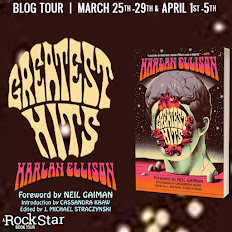BY: Darren Shan
PUBLISHED BY: Little, Brown and Company
PUBLISHED IN: 2005
ISBN: 0-316-15628-0
Pages: 220
Ages: Teen & Up
Darren Shan returns to his home time. He learns that his parents have moved away. His sister is now grown and has a child of her own. He runs into and old friend, Tommy, who is later murdered. He soon learns that the Lord Vampanese, Steve, in is in town after more murders occur. Steve now has a child named Darious.
Debbie and Alice Burgess is town too. They are helping the vampires build their army. Darren, Harkat, and the women go to the Cirque Du Freak. Vancha March later joins them. Mr. Tall, the owner of the Cirque Du Freak, told them no matter who won the war, an evil dictator known as the Lord of the Shadows would rise, rule and destroy the world.
Two of Steve’s men, R.V. and Morgan James, attack the Cirque and kills several of Darren’s friends.
This is one of the better sequels. I am glad to see that the author brought back Darren’s sister. I must warn you that a few characters die in this installment, leading up to the shocking cliffhanger.
















